What Was Happening in Rhodesia Prior to the Outbreak of the Bush War?
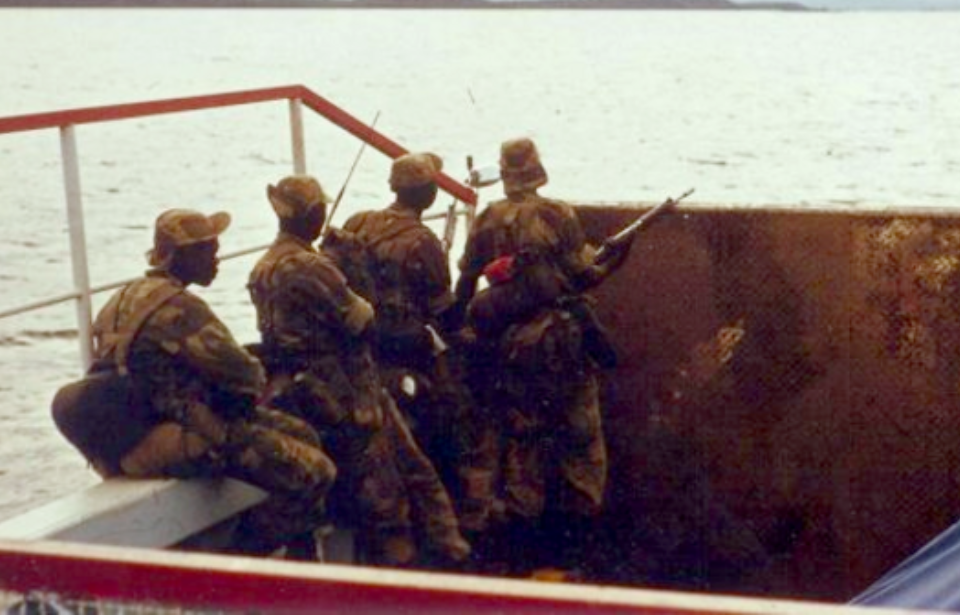
Among military enthusiasts and historians, the Rhodesian Bush War is a relatively vague and understudied conflict. There are many misconceptions that exist and, sadly, even those involved in racial identity movements have used the former country as a moniker, only to find out that they know nothing whatsoever about it.
Magazines in the 1970s and ’80s misinformed the public into believing Rhodesia was a hotbed for freelance mercenaries, where there were riches to be made – think something akin to the Frederick Forsyth novel, The Dogs of War. However, as the following series of articles will show, that’s far from the case.
Who was involved in the Rhodesian Bush War?
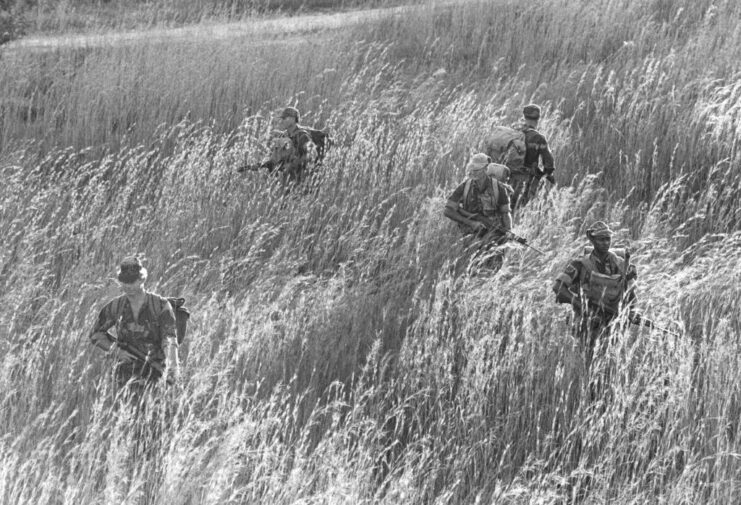
Members of the British South Africa Police (BSAP) on patrol in Rhodesia, 1973. (Photo Credit: Grant-Parke / Daily Express / Hulton Archive / Getty Images)
There were foreign volunteers who served in the Rhodesian Bush War. Most estimate that between 800 and 2,000 enlisted in the Rhodesian Army, although very few fulfilled their contractual commitments. They went through an intense screening process, which verified their military experience, health, psychological state and motives for enlisting. This included what the Rhodesians called “racialist” views.
Those who showed a desire to serve for “racial reasons” were shuttled out of the Rhodesia and had their passports stamped with “PNG” – Persona Non Grata. Given that, by 1977, approximately 80 percent of the military was Black, these types of individuals didn’t understand the conflict they were fighting.
It must also be stated that many American, British, Australian and other nationalities came to continue the fight against the tides of Communism and join a “hot” conflict during the Cold War. Several distinguished themselves and served in command positions, especially those who were Vietnam veterans.
That experience helped a handful fight a war that didn’t have political interference and one-sided border agreements. They sought the enemy in their sanctuaries. Rhodesia didn’t necessarily need them for tactical brilliance, but, in certain situations, this combat experience served everyone in spectacular fashion.
A brief history of Rhodesia
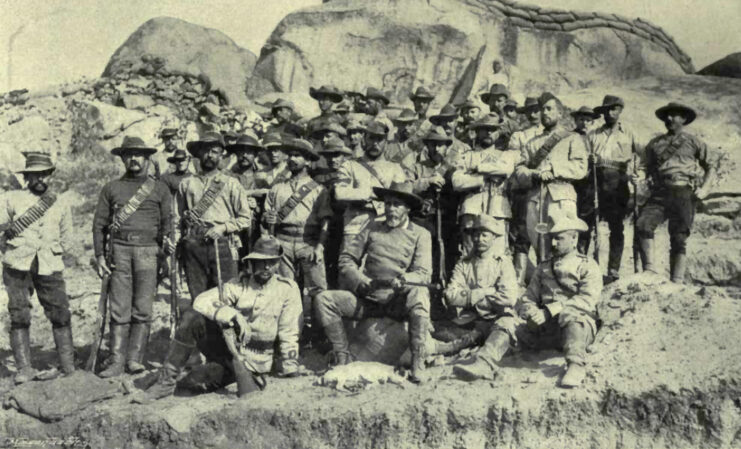
Frederick Selous with H Troop, Bulawayo Field Force, 1890s. (Photo Credit: F.C. Selous, Travel And Adventure in South East Africa / Wikimedia Commons / Public Domain)
The prophetic speech by British Prime Minister Harold Macmillan in 1960 to the Parliament of South Africa, dubbed “The Winds of Change Speech,” was, indeed, blowing across all colonies of the former Empire. Africa was volatile at any given time, and wars raged in the next 30 years to determine Southern portion’s future.
Rhodesia, a self-governing British colony, prided itself on independence and didn’t have the highly repressive Southern African laws of Apartheid. Just like in the United States, individual attitudes, social beliefs, movements and views began to change and spread. In principle, this was a movement ahead for mankind. How it worked out for Rhodesia, now renamed Zimbabwe, isn’t a military matter.
From 1890-99, the British South African Company’s military-trained contingent, the Southern Rhodesia Volunteers, were the colony’s defense force, having come about during the Boer War. The Rhodesia Regiments were subsequently created, taking up formal military duties.
Frederick Selous served as a scout in two campaigns further north of what we now remember as Rhodesia. Eventually, the land settled was named Rhodesiana, then Northern Rhodesia and Nyasaland. In 1964, Northern Rhodesia and Southern Rhodesia separated, causing a depletion of the south’s military personnel, due to most individuals being stationed in what’s now Zambia.
Early military forces in Rhodesia
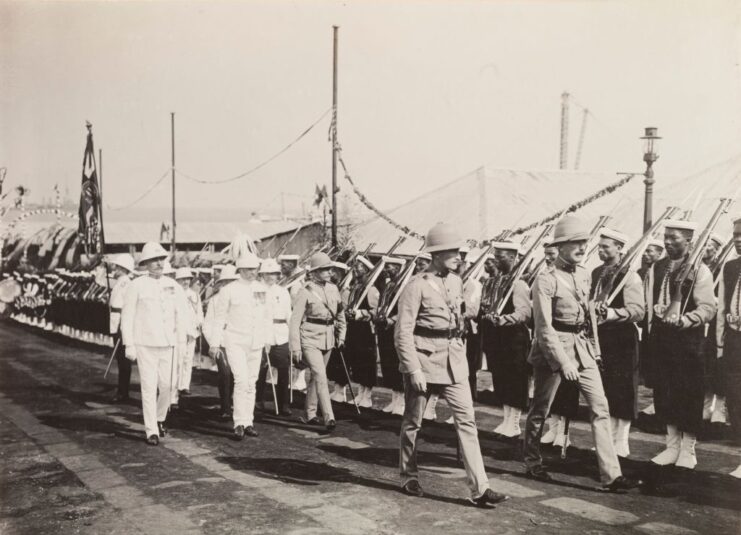
Inspection of the British South Africa Police (BSAP), 1910s. (Photo Credit: Bristol Archives / Universal Images Group / Getty Images)
Prior to this eventual mid-20th century development, there was a need to expand the small unit. In 1927, the Territorial Force, which we in America refer to as the National Guard, was formed, and national compulsory military training was implemented.
The British South Africa Police (BSAP), Rhodesia’s law enforcement agency, were trained in police and military duties until 1954, when they dedicated themselves to policing. They soon returned to their military duties by hunting down invading terrorists that committed atrocities in villages around the country.
Inside the Tribal Trust Lands, half of the nation’s acreage were serviced in this regard. Members of the Department of Internal Affairs (INTAF) members served as police, and as the Rhodesian Bush War intensified, they also performed soldiering duties. During the conflict, they regained their military capabilities to track down and engage Communist terrorists (CTs).
World War II and beyond
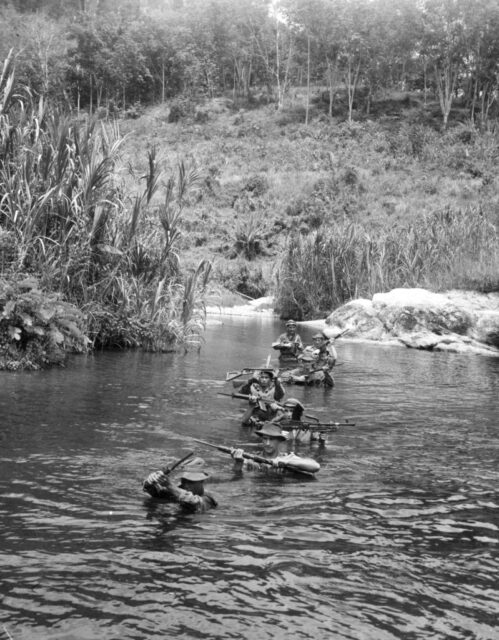
Soldiers serving during the Malayan Emergency, 1957. (Photo Credit: Horace Abrahams / Keystone Features / Getty Images)
In World War II, over 26,000 Rhodesians fought in various units, including the prestigious Long Range Desert Group and the Special Air Service (SAS). The number of Royal Air Force (RAF) pilots who earned decorations for heroism and astonishing air-to-air victories merited a visit from the British Royal Family to thank Rhodesia for its service to the Empire.
The Rhodesian Air Force (RhAF) reconstituted itself in 1947 with a threadbare fleet of aircraft. By 1951, the nation had a fully functional, albeit small, military.
In 1951, the British were fighting a Communist insurgency in Malaya. Given the performance of Rhodesian soldiers and airmen in the Second World War, a call went out for Permanent Force members to join in the fight with the British SAS. They fought for two years in the jungle, overcoming the aloofness of the Brits who looked down upon them. This paid off when Rhodesia developed its own Special Air Service, which would go on to play a major strategic and tactical part in the Rhodesian Bush War.
‘Breadbasket of Africa’
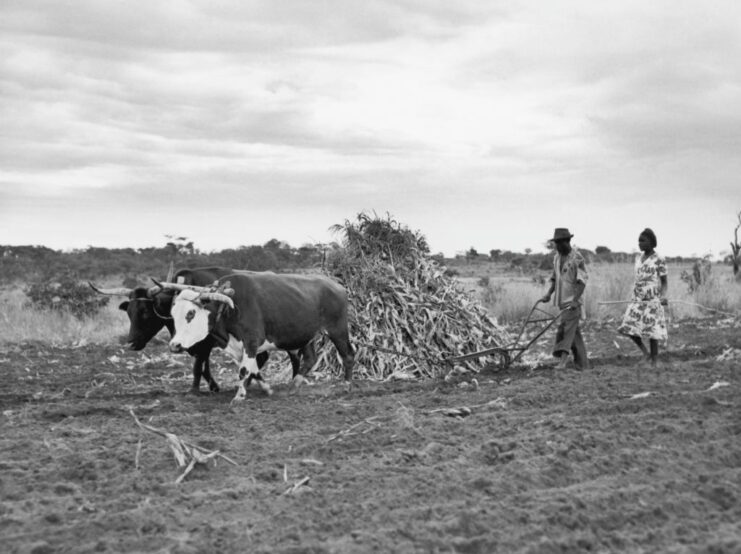
Farmer plowing his field in Rhodesia, 1955. (Photo Credit: Three Lions / Hulton Archive / Getty Images)
Rhodesia attracted many British and other nationalities in the post-war emigration to the colonies. It presented opportunities for the rugged individualist mindset, where a man could make his own future in business and agriculture. The often harsh and brutal continent of Africa conjures up fear for some and, for others, a life of adventure.
With advances in agriculture, Rhodesia was called the “Breadbasket of Africa.” Agriculture raised the standard of living for everyone. In the Tribal Trust Lands, more funding for schools, medical care and infrastructure ramped up and small towns became centers for commerce. This combined effort created a spirit of reciprocity and contentment.
Establishment of the Rhodesian Native Regiment (RNR)
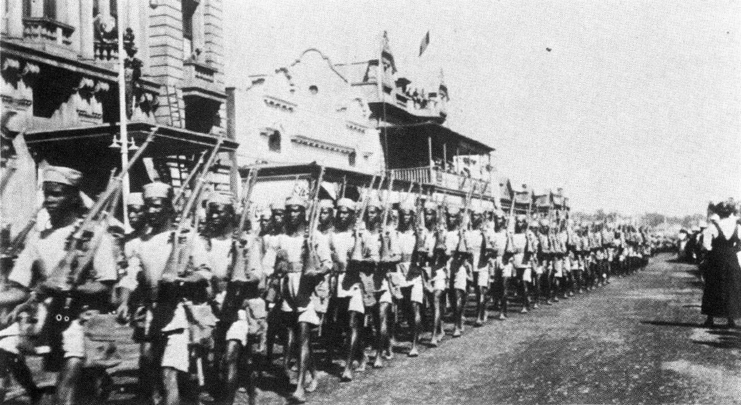
1st Rhodesia Native Regiment (RNR) parading in Salisbury (today Harare), 1916. (Photo Credit: Unknown Author / National Archives of Zimbabwe / Peter McLaughlin, Ragtime Soldiers: The Rhodesian Experience in the First World War / Wikimedia Commons / Public Domain)
Alongside the most well-known military history, we must recognize the contribution of the Indigenous population in such affairs. The Rhodesian Native Regiment (RNR), an all-volunteer unit, served in the First World War from 1916-18, in the East and South West Campaigns. After their demobilization, a platoon was maintained to augment the BSAP.
In 1940, the Rhodesian African Rifles (RAR) were formed, and the call went out for volunteers. To be selected was viewed as a prestigious and prosperous honor. A battalion was eventually raised and trained by veterans of the RNR and other Rhodesian Permanent Force members for what is now the Rhodesian Security Forces.
Training to a razor’s edge, they deployed to Kenya in November 1943, awaiting a call up for actual battlefield service. In 1944, they boarded a ship in Mombasa and headed for Ceylon (now Sri Lanka). They were then attached the British 14th Army in Burma. After becoming acclimatized to the jungle environment, they fought the Japanese. Initially surprised by the ferocity of the enemy, they eventually spearheaded several operations, taking key positions; they acquitted themselves well.
After the war, they were maintained and often helped the BSAP deal with riots and problems in the Tribal Trust Lands. Their greatest service would come in the Rhodesian Bush War, when they expanded to three battalions and functioned within the borders, performing light infantry tasks. This was important, as they often blended in and knew civilians in the villages that the CTs were operating from.
By 1974, the tactic of vertical envelopment by helicopter and para-drops became the standard operational method by both the Rhodesian Light Infantry and the RAR.
What was really happening in Rhodesia?
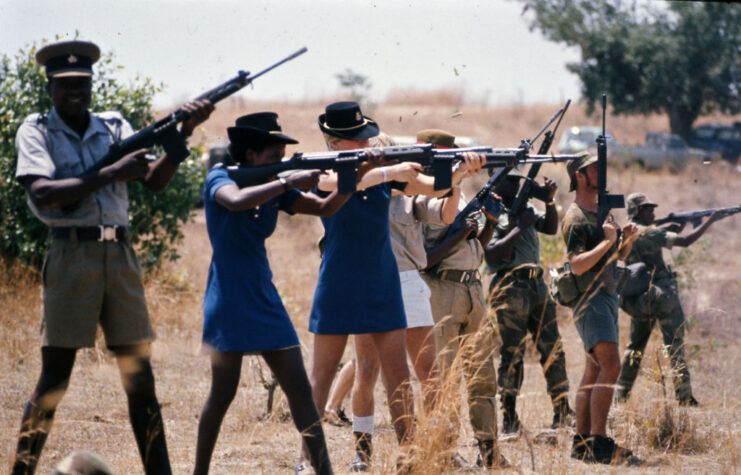
Members of the British South Africa Police (BSAP) practice shooting, 1976. (Photo Credit: Paul Harris / Getty Images)
Many question why Black soldiers would fight for a White minority ruling government, as it throws a wrench in the ideology that espouses the idea that the Communist terrorists were freedom fighters. Both factions in Rhodesia were fighting; the Zimbabwe African National Liberation Army (ZANLA) and the Zimbabwe People’s Revolutionary Army (ZIPRA) were supported by China and the Soviet Union, respectively, in training and war fighting.
Contrary to the propaganda from Western media, these freedom fighters gave ultimatums. This was reinforced through terror tactics, such as beheadings of tribal chiefs, the burning of villages and assaults against women that ended in death. When your mother, brother, father, sister or extended family are tortured and killed, the choice is clear.
They weren’t offering freedom – they were offering a preview of their potential future overlords. They may not have liked their present situation, but the future was bound to be much worse.
This history came together to form one of the world’s finest counter insurgency forces in history. We will come to see how such a small army and air force fought off a numerically and materially supported force. They didn’t suffer defeat on the battlefield. Due to the world’s ignorance of the true situation, it became a truism that the West held down Rhodesia, while the Chinese and Soviet Union cut its throat
Future articles will delve into the units involved on both sides, along with the driving politics that forced Rhodesians to literally fight for their lives.
Dan Tharp holds a B.A. in Classics and Ancient History. He is a veteran of the US Navy. A lifelong military researcher through reading and publishing original articles and interviews for various publications, he is also the author of four books, both fiction and non-fiction. More can be learned via his official website.
Tharp’s website is under development, but many of his previously published articles can be read there.





